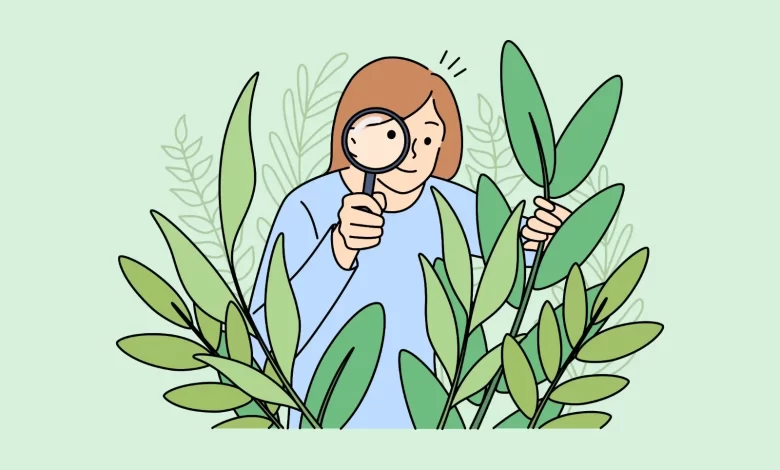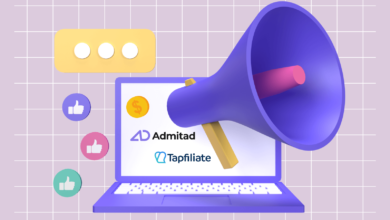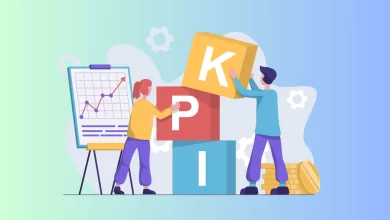How to Vet Affiliates: The Secret Sauce to a High-Quality Program

Affiliate marketing is extremely powerful for brand growth. With over 83% of marketers now using affiliate marketing programs to raise brand recognition, the industry has never been more popular.
Affiliate marketing starts with hiring an influential affiliate who can actively engage the brand’s target demographic. Fostering strong influencer partnerships is the key to running long-term affiliate campaigns that build brand awareness and loyalty amongst target audiences.
As we step into 2025, there’s no doubt that influencers are also becoming savvy contractors. Long-standing social media personalities and celebrity branding teams are well-equipped to handle affiliate engagements, making partnerships easier to navigate and measure.
The question is, how do you select the best influencers for your affiliate program? With numerous online personalities to choose from, it can be challenging to determine the ideal voice to represent your brand.
While hot-off-the-press personalities can be tempting on trending platforms such as TikTok, how can a brand ensure that its chosen affiliate doesn’t burn out overnight? On the flip side, long-standing social stars and C-list celebrities can also be a controversial choice. Is their social content still relevant? How much weight does their opinion have with your target audience?
The key to selecting the best affiliate for you is a strategic affiliate vetting process. Vetting a pool of potential influencers allows you to highlight any red flags early on and reduce the risk of damaging your brand reputation as a result of a negative partnership.
With this in mind, we’ve put together a guide on affiliate vetting before they join your program. From the initial vetting stage to the onboarding process, we’ll walk you through the influencer relationship process step by step.
The Importance of Vetting Affiliates
Affiliate vetting can make all the difference to the success of your affiliate marketing program. If you don’t believe us, just take a look at this example from Adidas of a partnership gone wrong.
After being the face of numerous controversial scandals, the company revealed in a statement that it had decided to part ways with Kanye West and his partner brand Yeezy.


“When your own employees are calling for you to take action on social media, you probably already let the issue go too far,” says Erik Bernstein, president of Bernstein Crisis Management.
Their epic split from music artist Kanye West has since cost the brand $250 million to repair reputational damage.
This is a great example of why the vetting process is crucial when embarking on an affiliate campaign. West was not only an unpredictable personality but had also had other negative experiences with large-scale brands in the past.
The lesson to learn here is that every affiliate partner you establish a relationship with could potentially be either an asset or a liability.
“In a world where influencer marketing is the trend, it’s easy to think that popularity and number of followers should be the main criteria for inviting people into your network. Nothing could be farther from the truth. For effective personal branding, your values—and the values of the people in your orbit—are your most valuable guides,” says William Arruda, co-creator of the Personal Brand Power Audit.
While the best option for an affiliate looks like the most popular influencer in your target market, establishing an influencer partnership based on popularity alone could be a massive risk for your brand.
The Employee Lifecycle Analogy
Affiliates represent your brand, even if they’re not employees. Therefore, they should be hired using the same strategy. Do they have the skills to effectively market your brand? Do their core values align with your company?
These are the questions you need to be asking yourself before embarking on a partnership. As demonstrated by Adidas, a bad relationship can be costly and embarrassing.
Hiring an affiliate should be like hiring an employee. In order to maintain the most professional relationship, each partnership should follow an employee lifecycle model, starting with recruitment, onboarding, development, retention, and, in some cases, offboarding.
This ensures that affiliate partners understand the commitment they are making to your brand, and your team has the chance to effectively train their partners to achieve the best results.
The Vetting Stage: What to Look For Before Approving Affiliates
Setting time aside to vet your potential affiliates could be the difference between a PR nightmare and a long-standing, successful partnership.
During the affiliate vetting stage, there are a number of qualities to consider before reaching out to an influencer, celebrity, or partnering brand.
From audience alignment to past affiliations, follow along as we guide you through each step of a successful vetting process.
Traffic Potential
One of the first things to consider is your proposed affiliate’s method for driving consumer traffic. Your chosen partner should rank highly as a creator amongst your target demographic, especially if you want to use them to drive traffic to your brand.
Here, you’re scoring how well your affiliate performs in two areas:
Social: This often includes generating consistent video views on platforms such as TikTok and Instagram, frequent engagement on social posts such as comments and likes, and achieving a powerful following.
Digital: This includes your chosen affiliate’s personal SEO. If they have a website, how much traffic does it generate? If they also operate as a personal brand, take a look at their paid ads. Do they have a powerful click-through rate?
With the help of AI, you can now predict how influencer campaigns will perform. AI tools such as Jasper and SurferSEO do this by analysing elements like how far the potential affiliate’s message can reach, how many people interact with it, and who makes up their audience.
Your affiliate’s ability to drive target traffic to your brand is crucial, so it’s an important first test to pass before diving deeper into the affiliate vetting stage.
Audience Alignment
Next, it’s time to review your affiliate’s audience. Do their followers align with the products or services your brand offers?
Take Gymshark, for example. The fitness apparel brand is known for targeting active individuals who are passionate about improving their fitness.


In order to insert their ad content seamlessly into the social sphere, they align themselves with fitness influencers who create content surrounding workout routines, fitness motivation, fashion and nutrition.
By partnering with fitness affiliates, Gymshark ensures that their extended audience is the target customer for their brand, in turn increasing the chance of conversion.
Reputation Check
What does your affiliate’s reputation look like? Deep diving into your proposed partner’s digital footprint can help uncover their credibility online.
Use tools such as SimilarWeb and SEMrush to determine the health of their past referrals. What other brands/websites cite your potential affiliate as a source or an opinion leader?
Taking a manual approach is also important. Search for your affiliate as if you were a follower or a customer of your brand. What appears when you search their name online? Is there any controversy surrounding your affiliate’s digital footprint?
In order to establish a long-lasting, positive affiliate relationship with your affiliate, opt for opinion leaders who don’t drive drama. Ensure that they have a positive sentiment score with your target demographic and that it has remained steady for an extended period of time.
This is also a great time to take a look into an influencer’s past affiliations. What verticals have they worked in? What were the outcomes? This will give you a better idea of how successful a future partnership may be and provide insight into what went well, and what could improve.
Content Quality
Content quality is a vital factor to consider during the affiliate vetting process. Review blogs, emails and social posts in great detail. Is the content ethical, authentic, and frequently created?
A desirable affiliate prioritizes consistent posting of original, professional-looking content and is a master in several areas. These can include video, photography, piece-to-camera commentary, SEO-optimised captioning, and more.
A notable example of high-quality affiliate content comes from skincare influencer Mia Maugé. With just under 200K followers on Instagram, she is regularly approached by skincare brands to work as an affiliate.
While her following drives results, so does the quality of her content. As you can see below, her Instagram feed is a diverse mix of Reels and image-based content.


We see regular videos of her reviewing products and holding them close up to the camera, as well as images of her in-store, supporting her affiliate/partnering brands.
This is the type of content quality dedication you’re looking for from your affiliates. Influencers must be well-versed in posting high-quality product content and also diversifying their content format to reach target leads from all angles.
Compliance and Ethical Alignment
Last but not least, we have compliance and ethical alignment. As a brand, it’s crucial that your reputation remains unharmed when partnering with an affiliate.
During the affiliate vetting process, ensure that your potential affiliates understand and follow FTC guidelines, especially disclosure rules.
Alongside this, it’s important to set clear standards for affiliates to comply with ahead of hiring. These include brand representation rules and any prohibited practices such as branded keywording or coupon poaching.
As you reach the end of the affiliate vetting stage, it’s vital that you ask your final contenders these questions. In fact, we’d suggest that you consider having them sign an Affiliate Code of Conduct or Policy Agreement, too.
What to Do Once You’ve Selected Your Affiliates
Once you’ve powered through the affiliate vetting stage, it’s time to select your winning affiliates. Following a similar trajectory to an in-team hire, this is the stage where you foster a connection between your brand and your chosen influencer and begin to introduce them to their role within your company.
Affiliate management isn’t as simple as signing a contract. Just like employees, an affiliate should be onboarded, monitored and evaluated as they embark on their journey with your company.
With this in mind, let’s have a closer look at the next steps your brand must take to build a powerful affiliate partnership in 2025.
- Training for Quality Control: When onboarding your affiliate, it’s essential to bring them up to speed on your brand’s marketing strategy. All partners speaking about your brand should be given training decks, product education, and guides on brand voice and values.
- Performance Evaluation: An affiliate marketing campaign should be monitored in the same way as any other marketing strategy. Use affiliate tracking software such as Tapfiliate to handle affiliate tracking and management behind the scenes. Stay on top of click quality metrics and be proactive if you see any red flags.
- Know When To Cut Ties: To avoid a Kanye West situation, ensure that you set clear terms in your affiliate agreement for termination. Monitor your relationship closely and hand out written warnings when appropriate. This maintains professionalism and provides you with more leverage to cut ties in the future in the case of any affiliate/brand misalignment.
Prioritising time in the early stages of affiliate onboarding to bring influencers up to speed on your brand voice, ethics, and values reduces the risk of future misalignment and undoubtedly pays off in retention and performance.
Conclusion: Why Vetting Pays Off in the Long Run
It’s no secret that affiliate vetting pays off in the long run. With the ability to research your pool of potential affiliates ahead of hiring, you put your brand in a brilliant position.
Researching your affiliate traffic potential, audience alignment, past affiliations, and other relevant factors enables your team to feel more confident when embarking on a new affiliate marketing campaign.
The key here is to treat affiliate vetting as a critical function, not an afterthought. When you build a partnership based on trust, high-quality content, and regular communication, you achieve a higher return on investment (ROI) and foster a relationship that benefits both you and your affiliates in the long term.
Plan to start your own affiliate program and manage it with minimum effort?
🚀 Try Tapfiliate free for 14 days!




